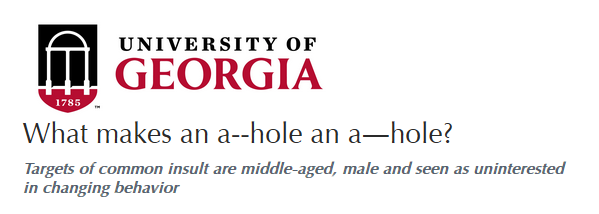UGA studies jerks, OTC naloxone push, ransomware targets the little guy, and more
14 Apr 2022
Posted by Andrew Kantor
How to boost a sunscreen
What ingredient could be added to sunscreens to make them even more effective? And better yet, be something that comes from nature, to appeal to today’s discerning consumers?
If you said “iron-trapping antioxidant molecules,” you win 500 Internet Points.
Pharmacology researchers at Britain’s University of Bath found that including natural antioxidants — especially those that can bind to the iron molecules produced by sunlight — can lead to significantly better sunscreens. And because those antioxidants are common in nature, it’s just a matter of finding the right ones.
“By including these potent antioxidants in skin-care products and sunscreen formulations, and therefore trapping free iron (not to be mistaken for bound or stored iron), we can expect to get an unprecedented level of protection from the sun.”

Iron armor it is, then
Lawmakers want naloxone OTC
They don’t have the power to make that happen, so they’re pressuring seven naloxone manufacturers to apply for OTC status “without delay.”
While many states have standing orders and workarounds that allow individuals to acquire naloxone without a prescription, regulatory hurdles continue to create unnecessary barriers. Further, a formal switch to OTC status will help reduce stigma and encourage the widespread use of this critical medication during emergencies.
Don’t forget: Spring Region Meetings are coming fast!
“Spring is here, spring is here, life is skittles and life is beer.”
—Tom Lehrer, “Poisoning Pigeons in the Park”
Spring is also the time for GPhA’s aptly named Spring Region Meetings, coming up later this month. It’s time to register for yours!
Not only do you get to hang with your fellow pharmacists for an evening (where the food is good but the price is low), the updates you’ll get count for an hour of CE. W00t!
And this year we’re back to separate meetings for each region — find yours, find your meeting, and register now!

HPV: Once and done
After a few years of collecting data, it seems that girls and young women only need one dose of HPV vaccine to provide protection against cervical cancer. The two-dose regimen has been standard, but now the WHO says girls under 21 can make do with just one shot, while women over 21 should continue to get two doses. (It does not say what 21-year-olds should do.)
You know ’em when you meet ’em
UGA researchers are asking the important questions.
(You can read the paper here.)
Hello old friend
It’s only April, but the writers are already teasing potential plot lines for next season. Researchers at La Jolla Institute for Immunology found that the Zika virus — which was a Pretty Big Deal a few years ago, especially in South America — “can mutate to become more infective — and potentially break through pre-existing immunity.”
The scary part about Zika is that it can be mild for a woman, but devastating for her unborn child — think infant microcephaly and other neurological problems.
The (sort of) good side is that it’s only transmitted either by mosquitoes or sexually, so protection is a bit easier. Unless it mutates.
Slightly interesting notes on arthritis drugs
When TNF inhibitors don’t work, the next step is often a JAK inhibitor — one with a cool name like Xeljanz*. But with safety concerns still looming, it seems rheumatologists are cooling on the drug class. The big winner: Bristol Myers Squibb and Orencia.
“Interestingly, preference for Bristol’s Orencia post-TNF use has been increasing at nearly the same rate that preference for the JAKs has been decreasing.” [T]wo-fifths of respondents selected Orencia as their “preferred agent to prescribe” when discontinuing a TNF agent.
But what about IL-6 inhibitors? Meh: “[Their] overall brand share ‘has remained flat’.”
* Not to be confused with Xilhanz the Conqueror

Today’s potential Alzheimer’s treatment is …
… niacin. The association between niacin and cognitive decline — or, rather, the lack of it — has been known for a while. But we’re smarter now and have much cooler tools to play with, so several studies are underway to tease out the connection, and hopefully take advantage of it.
Research findings published in the last few years have suggested that niacin can modulate the activity of microglia, important immune cells in the brain, in mice models for Parkinson’s, glioblastoma, and multiple sclerosis.
(It seems that niacin might prevent microglia from overreacting when they detect amyloid plaques (causing inflammation), while at the same time enhancing their good work, like removing debris. Time will tell.)
The Long Read: Ransomware edition
When big health systems or hospitals get hit with ransomware attacks it makes the news, but smaller companies are also in the crosshairs. (The bad guys don’t just target a specific company; they also sniff out anyone using compromised software — big or small.)
Thus, “At small and rural hospitals, ransomware attacks are causing unprecedented crises.”



